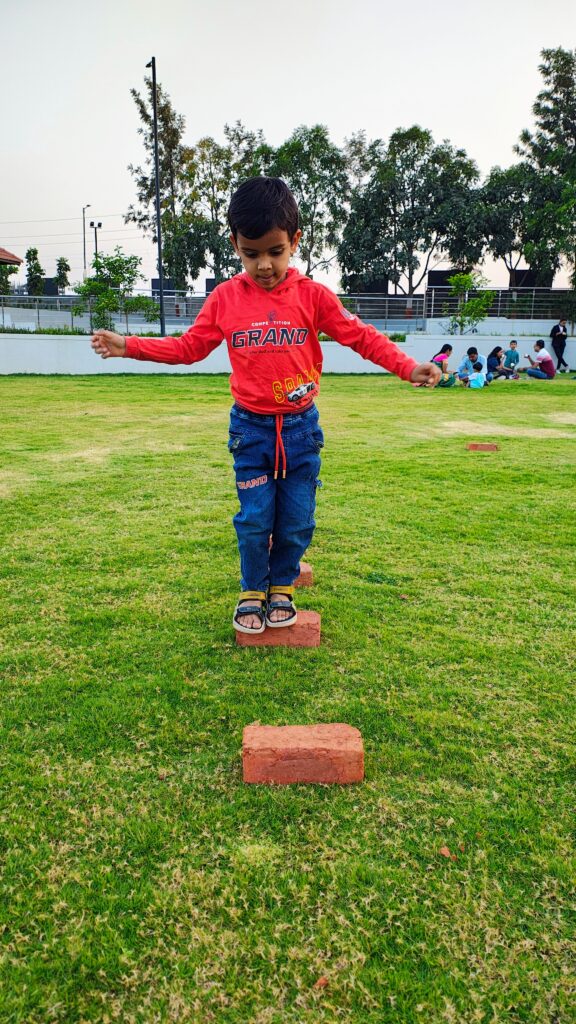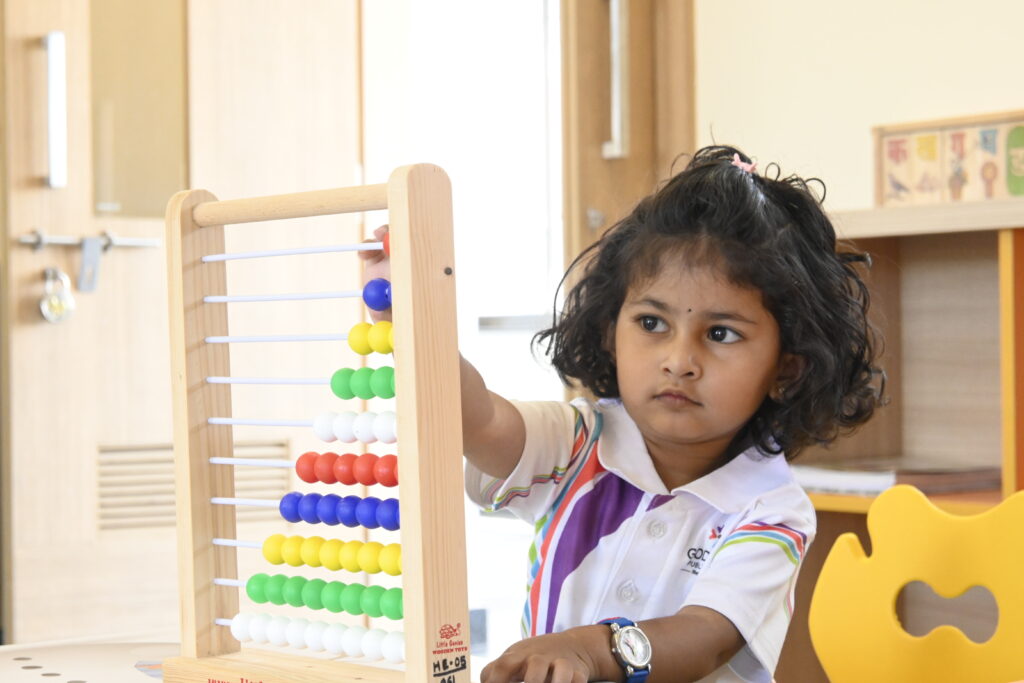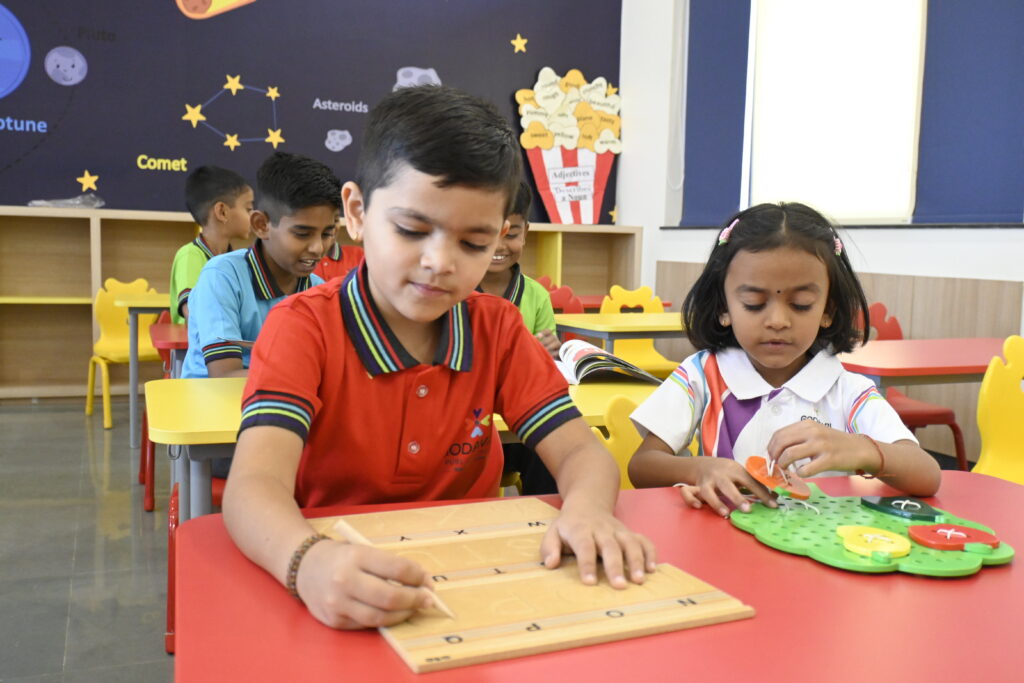Introduction
In a digital world, screens are everywhere. From online classes to entertainment, students spend a significant amount of time on screens. While technology is useful, excessive screen time can lead to health issues, and reduced focus, and can even affect sleep. Students must have a balance in order to maintain their productivity.
Imagine a student who plays video games on their smartphone for hours after school. Over time, this habit affects their concentration, reduces their physical strength, and impacts their ability to interact with others. Finding ways to reduce the use of screens is essential because many children struggle with this problem.
In this blog, we will explore how to reduce screen time as a student, and discuss why excessive screen use is harmful and provide five effective strategies to help students limit their digital use. Additionally, we will also discuss how Godavari Public School uses regular routines and interesting activities to help students follow healthier screen habits.
Here, we explore the five points that help to reduce screen time for students:
Table of Contents
1. Engage in Outdoor Activities
How to Reduce Screen Time as a Student? Students generally spend more time in front of screens for enjoyment and online classes, leading to less physical activity. But balancing screen time with outdoor activities is essential for overall well-being.
Here’s how we ensure students step out, stay active, and make the most of the world beyond screens:
- Dedicated Sports Programs
- Adventure and Nature Walks
- Play-Based Learning
- Screen-Free School Initiatives
- Fitness and Well-being Programs

By applying these strategies, our School makes sure that children actually engage in and enjoy outdoor activities rather than simply learning about their value.
2. Set Screen Time Limits
Have you ever had the feeling that time simply flies by when you’re on a computer, tablet, or phone?
After watching a tutorial for a few minutes, you’ve been searching for hours!
While screens play a vital role in education and entertainment, excessive screen use can have negative effects on concentration, social relationships, and fitness. Setting clear boundaries is essential for this reason.
At Godavari Public School, we help students build “healthy screen habits” in practical ways. Here’s how we guide them:
- Time-Tracking Tools
- Balanced Study Plans
- Technology-Free Zones
- Interactive Challenges
- Parent-Teacher Collaboration

Analyze how frequently you check your screen time. Could you spend that time doing something else you enjoy? Students can create lifelong habits that keep them focused, healthy, and involved in the world by making small modifications right now.
3. Develop Offline Hobbies
Have you ever lost track of time while painting, playing an instrument, or reading an exciting book?
The magic of hobbies is that they take you into a universe where time is not controlled by screens!
Here’s how we can develop offline hobbies:
- Creative Clubs and Workshops
- Reading and Storytelling Initiatives
- Puzzle and Strategy Games
- Environmental Projects

How to reduce screen time as a student? One of the best ways is to replace screen time with something even more engaging! Have you always wanted to try playing a musical instrument, sketching, or solving a Rubik’s Cube? Now is the perfect time to start!
At Godavari Public School, we aim to ensure that “children’s enjoyment” goes beyond technology.
4. Promote Face-to-Face Interaction
Have you ever observed that, though texting can be different from in-person talks, in-person interactions flow more naturally?
The ability to express thoughts, share emotions, and build relationships comes from real conversations, not just emojis and messages!
We create an environment that brings students together and enhances their communication skills in fun and interactive ways:
- Collaborative Group Projects
- Interactive Classroom Discussions
- Social Skill Programs
- Event and Festival Celebrations
- Parent-Student Interaction Days
At Godavari Public School, we help students reconnect with the real world, which promotes social interaction, open communication, and time spent with friends and family helps students grow in confidence, social skills, and emotional intelligence.
5. Create a Screen-Free Study Environment
Have you ever sat down to study, only to find yourself checking your phone every few minutes?
Screens can be helpful for learning, but they are also full of distractions, messages, notifications, and endless scrolling. The secret is to provide an environment without digital disruptions that encourages deep learning.
At Godavari Public School, we help students develop productive study habits by promoting screen-free learning in different ways:
- Dedicated Study Zones
- Offline Study Sessions
- Guided Time Management Techniques
- Group Discussions
- Minimal Digital Dependency

A concentrated environment promotes more intelligent learning, superior outcomes, and a feeling of achievement! To prepare children for success outside of the classroom, at Godavari Public School we make sure they cultivate the habit of focused studying.
Conclusion
Analyze your daily schedule. What is your average amount of time spent looking at screens? What if you replaced important talks, a new hobby, or outside play with some of that time? Reducing screen time doesn’t mean rejecting technology; it means finding a balance that keeps children engaged, attentive, and socially connected.
By supporting outdoor activities, defining screen limitations, promoting hobbies, encouraging in-person contacts, and cultivating screen-free study habits, we at Godavari Public School assist children in making this transition. These straightforward but effective techniques ensure that students stay productive, love learning, and build closer bonds with others outside of the digital space.
It’s your turn now!
Whether it’s going for a walk, joining a creative club, or setting a screen-free study space, small changes can make a big difference. Let’s create a future where technology supports growth rather than limits it!
FAQ’S
Q1: What is a good screen time for students?
A: The age and purpose of students determine how much screen time is appropriate for them. Entertainment screen time should be limited to one hour or less each day, while educational screen time of one to two hours is suitable for learning.
Q2: How do I control screen time?
A: To manage screen use, set boundaries, take breaks, and replace screen time with enjoyable offline activities. Create screen-free areas, use time-tracking apps, and maintain a healthy habit.
Q3: What is a healthy screen time?
A: It’s not just about numbers when it comes to healthy screen time! How to reduce screen time as a student is an important consideration. Fun screen time should be kept to an hour or less, while children should utilize screens for instructional purposes for one to two hours.
Q4: How to check screen time?
A: Checking your screen time is easy! Simply go to Settings > Screen Time (on iPhone) or Digital Wellbeing (on Android) to see your usage. You can also set limits or reminders to stay in control.



